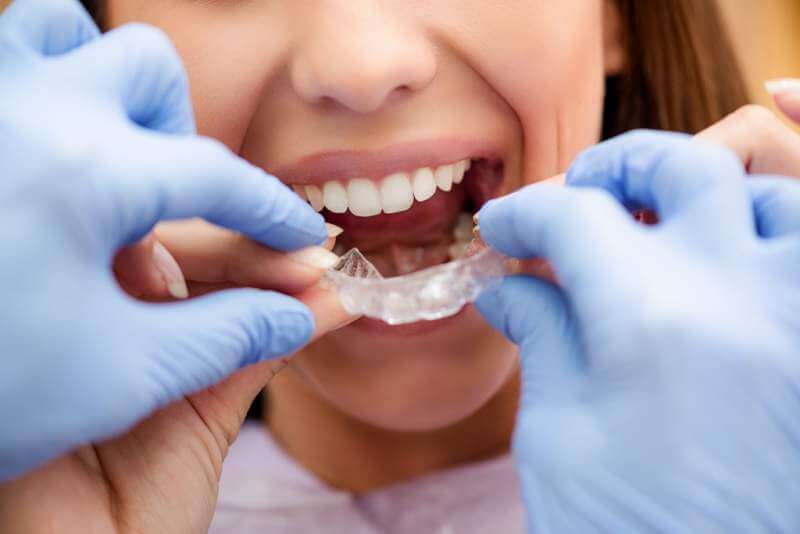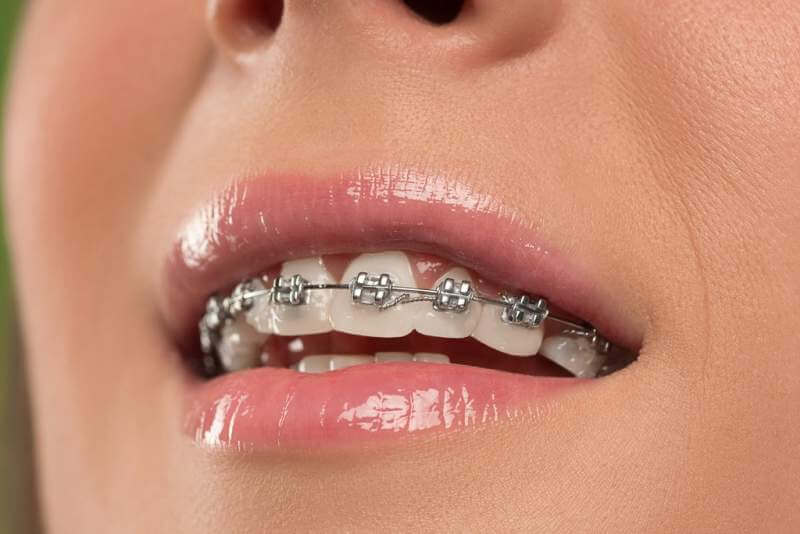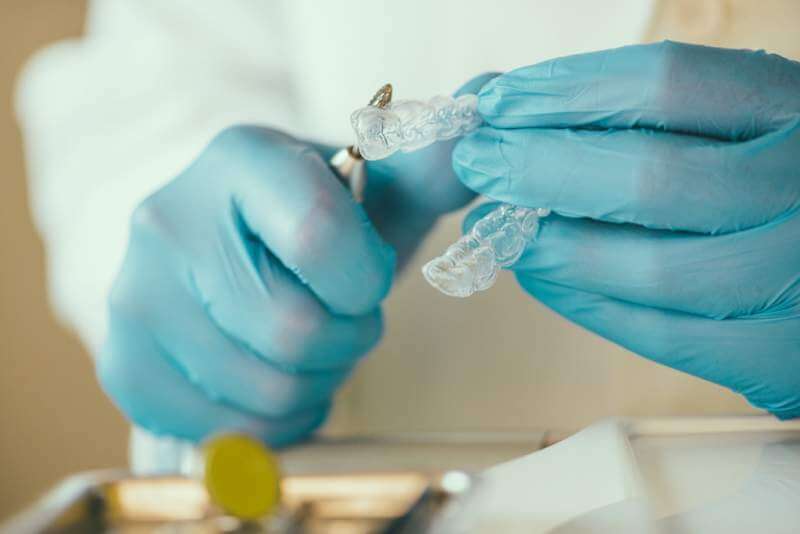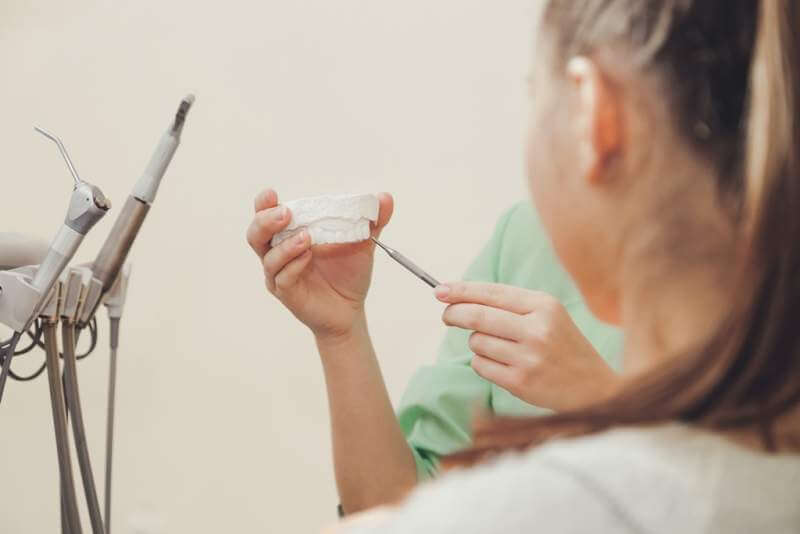Long ago, folks were limited to the option of braces for correcting their teeth’s alignment. Over time, however, technology has progressed, leading to the birth of Invisalign clear aligners.
This brings two options to the table, braces and Invisalign clear aligners along with the confusion of what’s suitable for you. In a typical situation, most people would love to opt for a dental solution that is less visible.
Since the metal wires and brackets tend to be visible, Invisalign clear aligners gain several points in their favor. However, you are not the sole person responsible for calling the shots when it comes to choosing between the two dental solutions.
The condition of your teeth plays a detrimental role in deciding which option you can avail. It is ideal to head straight to an orthodontist for getting an idea of what will work best for you- Invisalign or braces?
To make it easy for you though, here’s a comparative take between Invisalign aligners and braces:
What are braces and Invisalign clear aligners?
 Before moving any further, it is crucial to understand the difference between the two dental options available to you.
Before moving any further, it is crucial to understand the difference between the two dental options available to you.
Braces are widely known for their archwires and brackets that hold your teeth in place. The brackets are commonly made of different types of materials including metal, ceramic, and composite.
A hybrid combination may also be employed to hold your teeth to their new position. What’s interesting is that you can add personality to your braces now by picking your preferred color for the braces’ brackets.
On top of that, it is also possible to get backside brackets, where the brackets are applied to the back of the teeth so that they become less noticeable. All these factors have helped dissolve the stigma that initially surrounded wearing braces.
At the same time, clear aligners are plastic dental wears that are worn over the teeth. They are custom-made by computers and are easily removable. Since Invisalign aligners tend to be clear, they are also termed as “clear braces.”
In the initial round, your dentist will take your teeth’s impressions and photos. Subsequently, a pair of aligners will be computer-manufactured for you. Moreover, a new pair will be made for you after every 6-8 weeks, so there will be roughly 20-30 times that your orthodontist will take your teeth impressions for a new aligner set.
Braces and Invisalign are helpful for different dental concerns
 Braces and Invisalign clear aligners help with varying teeth problems. Therefore, your dentist can recommend a solution after inspecting the condition of your teeth.
Braces and Invisalign clear aligners help with varying teeth problems. Therefore, your dentist can recommend a solution after inspecting the condition of your teeth.
Braces are useful for rectifying problems such as crowding, irregular spacing, protrusions, alignment issues, or crookedness of your teeth. Subsequently, braces are the answer to the majority of severe dental concerns.
On the other hand, clear aligners are a viable option for minor teeth alignment concerns. For example, they can help correct mild relapse irregularities, overbite, crossbite, simple bite, overly crowded teeth, and widely spaced teeth.
What’s more, braces are not advisable for patients who play rough contact sports on a regular note. On the other hand, Invisalign aligners are not for patients with back tooth bite concerns and bridgework. It is also not for those who need to move their teeth vertically or rotate premolars or canines.
Both the dental options last for different time periods
 Before you finalize your preferred option, it is best to know that Invisalign and braces demand different treatment times.
Before you finalize your preferred option, it is best to know that Invisalign and braces demand different treatment times.
Braces are typically worn for 12-24 months. Additionally, the readjustments are required after every 6-8 weeks. However, the exact adjustment calls are made by your dentist as he looks into your dental condition.
The placement of archwires and brackets take roughly 10-20 minutes. In the early day, this used to be a painful process. However, with all the technological advancements, discomfort during the placement procedure has significantly reduced.
Once these are placed, elastic bands hold the brackets in their place. Regular appointments typically replace the elastic bands. Adjustment of the rest of the dental set is timed after every 3-10 weeks.
On the flip side, the treatment period for clear braces is outlined by your dentist. A patient is expected to wear aligners for about 22 hours in a day. He has to take them off for flossing, eating, and brushing teeth with a new set of aligners needed every 2-3 weeks.
Mostly, patients are required to wear a simple set of Invisalign aligner mold for two weeks. After that, the orthodontist takes another round of impressions and create a new custom mold. This one is slightly different from the previous one as your teeth shift from their position ever so slightly during that time. At most, the process of getting new molds every 2-3 weeks lasts for six months.
Braces and Invisalign aligners need different care
 Lastly, both dental solutions require different forms of care. As it is clear by now that Invisalign clear aligners are removable, you will need to take care of the mold, particularly, making sure that it doesn’t break when it is not in your mouth.
Lastly, both dental solutions require different forms of care. As it is clear by now that Invisalign clear aligners are removable, you will need to take care of the mold, particularly, making sure that it doesn’t break when it is not in your mouth.
You will have to remember to take out the mold not only before eating but also before drinking water. It is possible that you may experience slight discomfort from the tooth movement when wearing invisible Invisalign aligners. You will also have to brush after every meal to keep stains at bay.
You will also have to be mindful about exposing the mold to hot water as the high temperature can damage it. On the other hand, braces need proper brushing and flossing. You will have to ensure that no food particles are stuck to your braces. Improper care in this regard can culminate in foul mouth odor.
Or, it can lead to dental health issues such as gingivitis. Braces can also cause discomfort owing to any poking wires or broken brackets. Moreover, the tooth movement may culminate in pain and sores. You may also face a tough time while trying to remove sticky and hard foods, so you need to be careful about what you eat in the first place.
Particularly, you need to avoid eating sticky foods. Lastly, braces can reach a finale of tooth discoloration owing to bracket breakages, difficult hygiene, and tooth wear.
Closing thoughts – which option is suitable for you?
 Summing up, both Invisalign clear aligners and braces come with their merits and demerits. In this regard, it is best to get in touch with the nearest dentist in your location. For instance, if you’re based in Arizona, look for Arizona orthodontics, and learn about your dental condition. A professional check-up can best determine which option is suitable for you.
Summing up, both Invisalign clear aligners and braces come with their merits and demerits. In this regard, it is best to get in touch with the nearest dentist in your location. For instance, if you’re based in Arizona, look for Arizona orthodontics, and learn about your dental condition. A professional check-up can best determine which option is suitable for you.
